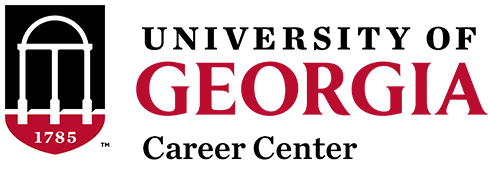This blog post has been updated by Megan Elrath, Career Consultant on April 2, 2024.
Many employers receive hundreds of applications for every job posting. Since the late 1990s, more and more employers have begun using Applicant Tracking Systems (ATS) to help parse the stacks of resumes and cover letters, as well as to streamline their hiring processes. ATS is a form of software that allows employers to quickly scan applications for the keywords or attributes that are most important to the role. The ATS will scan the application materials and provide the employer with a report, sorted by weighted rankings for each candidate. Candidates are scored based on how closely they match the qualifications, the frequency of keywords used, the uniqueness of keywords used, and additional criteria that may be important to the hiring manager. How do you get to the top of the list and into the hands of the employer? Follow these four tips to help get your resume through the system.
- Stick to traditional formatting. Sometimes we try to stand out by using creative headings for our experiences; however, this can cause the ATS to skip over that section completely. If you label your education section as “Academic Achievements,” the ATS may skip the section and won’t recognize that you do meet the minimum educational requirements for the position. It is best to stick with traditional headings such as education, work experience, certifications, campus involvement, and skills.
- Headers, footers, tables, and columns. Most systems are unable to read headers and footers. If you include your contact information or any other important information in these areas, they likely will not be scanned by the system. Similarly, some job seekers like to use tables to format sections within the resume. Like headers and footers, many systems are unable to pull information from tables. ATS are also unable to interpret graphics or charts. If anything, using graphics will confuse the system and will increase your likelihood of being rejected. Similarly, many ATS cannot scan and parse information that is contained in columns. Since the systems typically review each line from left to right, information stored in columns can cause confusion in the parsing process.
- Font style and color. Typically, any serif or sans serif font is deemed acceptable for professional documents, including your resume. However, some ATS are better at interpreting sans serif fonts than serif fonts. This is because sans serif fonts have a more distinguished space in between letters than their serif font counterparts. Stick to fonts like Calibri, Arial, Verdana, or Tahoma rather than Times New Roman or Cambria to avoid confusing the system. If you want to incorporate some design elements into your resume, you can use a colored font, shading, and borders. However, remember that a resume is a professional document and the content needs to ultimately shine through. So, stick to one accent color and choose a streamlined format that is easy to read.
- Use the right keywords. The most important thing to get past the robots is to use the right keywords. The ATS relies heavily on these keywords to identify the best candidates for any given role. You may have heard that you should tailor your resume to each position for which you apply. While this process may seem cumbersome, it is especially important to get through an ATS. Scan the job description and pick out the most important keywords. You can use AI tools to see which words are used most frequently in a position description. Incorporate these keywords into your resume.
It is important to use the same phrasing the company uses. If the position description lists that you must be proficient in Microsoft Word and you simply list Word or MS Word, the system may not pick up on the keyword. If the position is looking for someone who is strong in data analysis, use data analysis in your resume as opposed to saying analyzed data. Use industry and company-specific jargon in your resume, even if not found in the position description, as they may be keywords picked up by the ATS. If you’re not sure what types of industry keywords to include, try scanning the company website or talking to someone in the field.
Avoid using acronyms or abbreviations alone in your resume. First, write out the word, followed by the acronym. For example, if you have a CNA certification, you don’t know if the system is looking for “CNA” or “Certified Nurses Assistant.” In order to increase your chances of getting to a human, include both the full name followed by the acronym in parentheses.
The most important thing to remember when preparing a resume is tailoring to the specific position. Whether it is going through an Applicant Tracking System or directly into the hands of the employer, it is important to show your unique qualifications for that position. Check out our examples for tailoring your application materials here.
